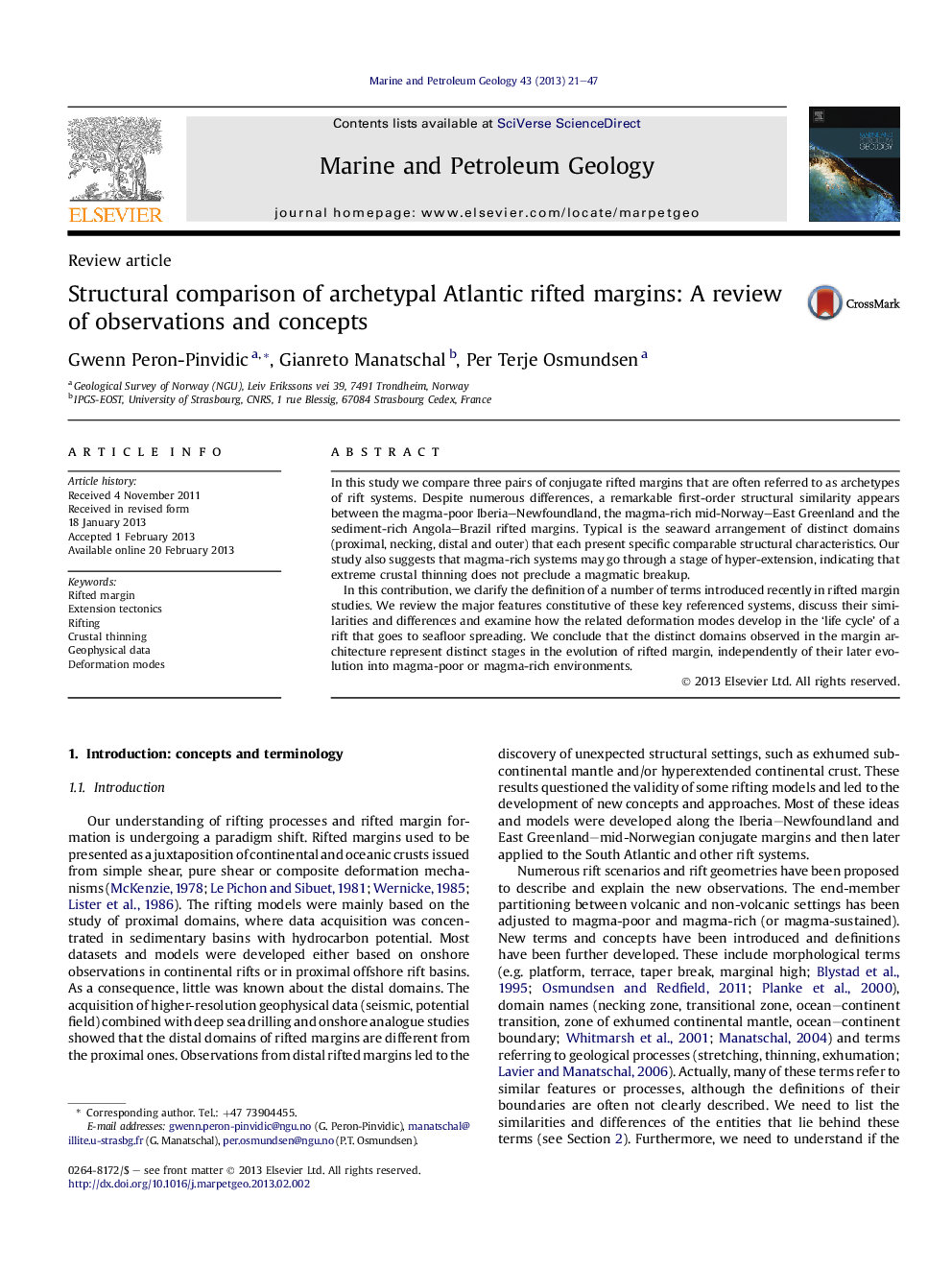| کد مقاله | کد نشریه | سال انتشار | مقاله انگلیسی | نسخه تمام متن |
|---|---|---|---|---|
| 6435512 | 1637181 | 2013 | 27 صفحه PDF | دانلود رایگان |
In this study we compare three pairs of conjugate rifted margins that are often referred to as archetypes of rift systems. Despite numerous differences, a remarkable first-order structural similarity appears between the magma-poor Iberia-Newfoundland, the magma-rich mid-Norway-East Greenland and the sediment-rich Angola-Brazil rifted margins. Typical is the seaward arrangement of distinct domains (proximal, necking, distal and outer) that each present specific comparable structural characteristics. Our study also suggests that magma-rich systems may go through a stage of hyper-extension, indicating that extreme crustal thinning does not preclude a magmatic breakup.In this contribution, we clarify the definition of a number of terms introduced recently in rifted margin studies. We review the major features constitutive of these key referenced systems, discuss their similarities and differences and examine how the related deformation modes develop in the 'life cycle' of a rift that goes to seafloor spreading. We conclude that the distinct domains observed in the margin architecture represent distinct stages in the evolution of rifted margin, independently of their later evolution into magma-poor or magma-rich environments.
⺠Review of 3 rifted systems 'archetypes' of magma-poor, -rich, sediment-rich margins. ⺠Similarities show that margins evolve towards architectures that resemble each other. ⺠Each margin corresponds to the combination of distinct structural domains. ⺠Each of these domains is related to one specific phase of deformation.
Journal: Marine and Petroleum Geology - Volume 43, May 2013, Pages 21-47
